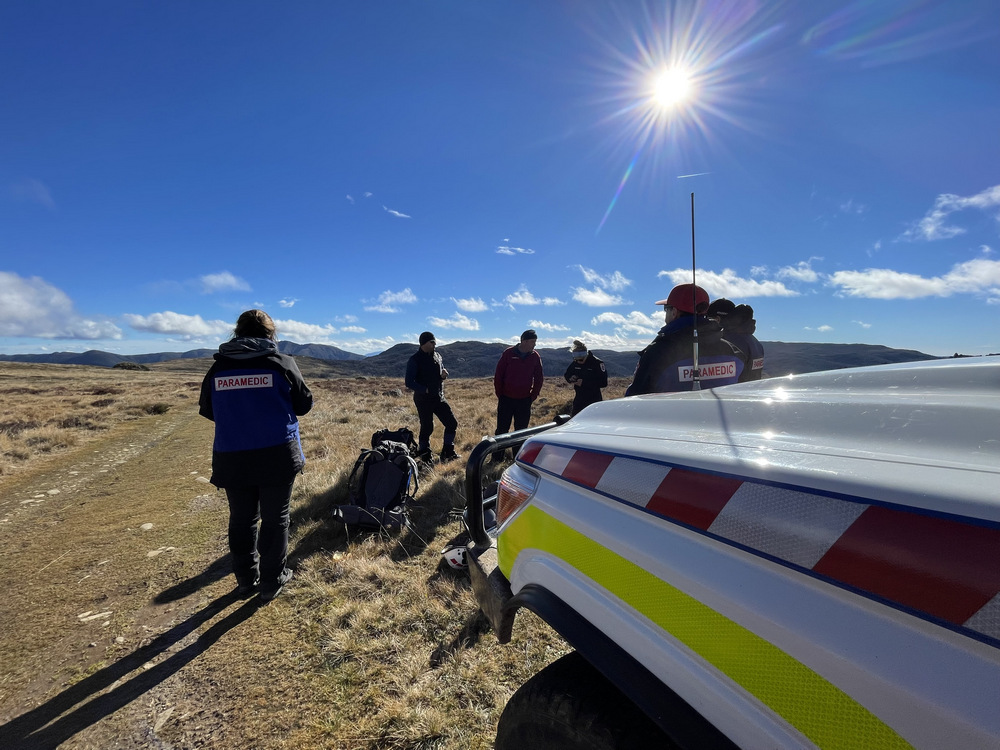
When there is an emergency in some of the most secluded and treacherous alpine or bush areas, it’s Ambulance Victoria’s (AV) elite Wilderness Response paramedics who will answer the call.
They are a team of more than 120 specially trained wilderness paramedics who are sent to help missing or injured people, 4WD off-road incidents or mountain bike falls, or cases where an air ambulance is unable to access a patient.
Wilderness Response paramedics are Advanced Life Support (ALS) and Mobile Intensive Care Ambulance (MICA) paramedics who are trained to be self-sufficient in the wilderness and can be sent off-road whenever a wilderness response is required.
AV Emergency Management Planning Coordinator for Gippsland Danny Anderson said the Wilderness Response team were called on to play key roles in larger-scale community emergencies such as the Wye River fires in 2016, the Mallacoota fires in 2020, and the Traralgon storms in 2021.
“Our wilderness paramedics can be flown or dropped into isolated, remote communities during an emergency or natural disaster, so they are completely self-sufficient, they carry with them their gear, water, meals and a communications radio,” he said.
“It’s about supporting these communities in scenarios where medical assistance may be hard to access.
“It’s a true specialist role which select paramedics are specifically trained for and they must have the right experience being out in the elements in the bush as well; it’s not a typical ambulance job.”
All Wilderness Response paramedics undergo a five-day training induction where their outdoor safety skills and patient care are put to the test in the elements.
They are required to have excellent orientation and navigation skills and complete fitness tests, including a pack hike test, medical and pre-reading assignments.
AV Wilderness Response paramedic based in Victoria’s Barwon South-West region, Mick Bajada, said the wilderness response capabilities allowed AV to provide best care to anyone, no matter how complex their location is to respond to.
“Wilderness response couples together everything that is being a paramedic – it’s about teamwork, problem-solving, applying innovations to complex issues, planning ahead, and constantly assessing risks,” he said.
Mr Bajada was involved with retrieving an injured patient who was stuck on a ledge in the Otway National Park earlier this year and could not be winched by air ambulance due to a storm.
“Wildness paramedics went in as part of a multi-agency response team and the retrieval operation took all night,” he said.
“Planning for the rescue extrication and the physical exertion of retrieving the patient safely required strong collaboration with other agencies.”
AV Wilderness Response paramedic based in Gippsland, Jo O’Doherty, said Wilderness Paramedics needed to be comfortable in the most uncomfortable environments.
“Physical fitness is important as they may have to carry a 20kg backpack to the patient for several kilometres during ascents, descents, river crossings, snow, mud and overgrown tracks,” she said.
“This role provides paramedics with the opportunity to think outside the box and use the limited resources they have available to best manage their patient.”
The opportunity to become a Wilderness Response paramedic is offered to paramedics with strong outdoor skills and who have more than five years’ experience on-road.
AV's Wilderness Response paramedics are called on average once every two weeks as part of a multi-agency response.

Get unlimited access to hundreds of ACP's top courses for your professional development.
Join Now